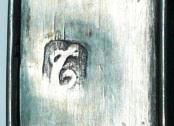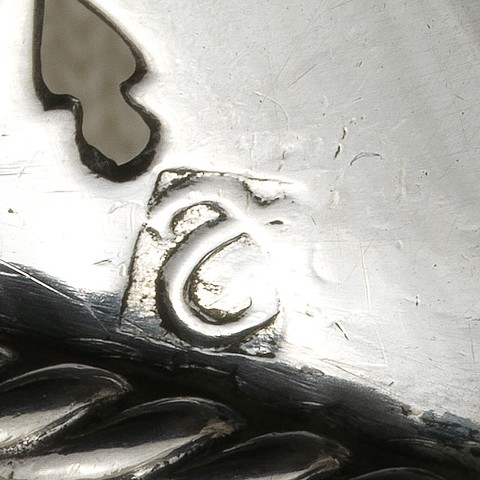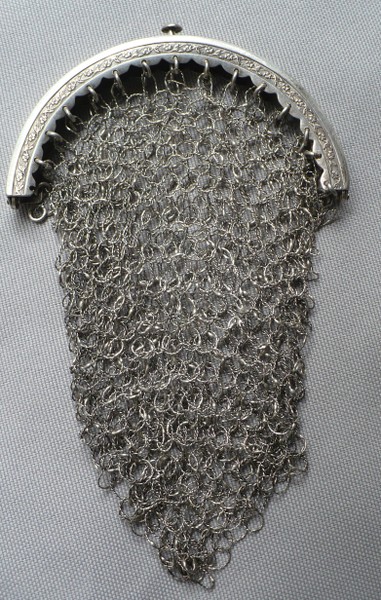
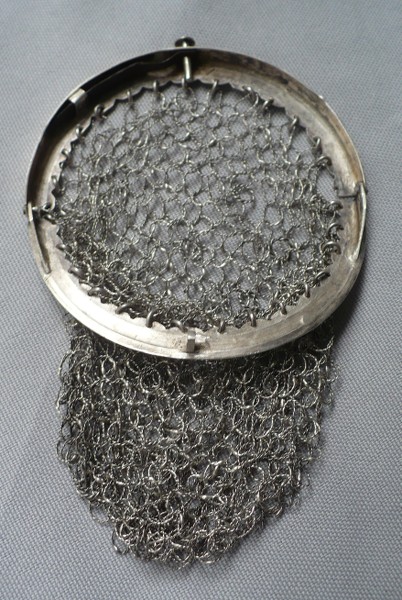
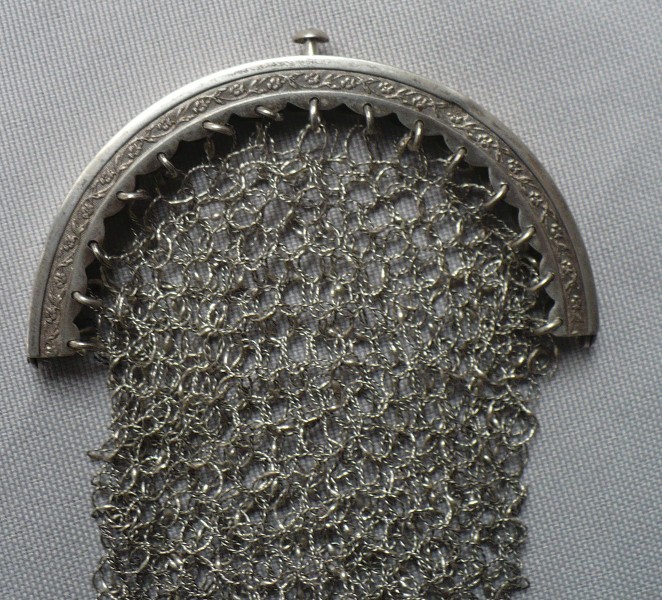
Silver purse with engraved braces and braided silver rings (chainmail). Width 6.6 cm, long 11 cm, weight23 gram. With the marks of southern Netherlands 1814-1842. These marks have been used in the present Belgium until March 1st 1832, in the assay office Maastricht and Luxemburg until March 1st 1842
Branch in vase shaped cartouche standard mark for small work, minimum 833/000 fineness. This mark was used on small work without office mark.
Z mark for objects which are submitted in finished condition, which consequently could then not be assayed as thoroughly. ZII for silver 835/000 fineness. Z marks Introduced in 1953 for used objects/ imported without valid hallmark. Valid from 1953 till present.

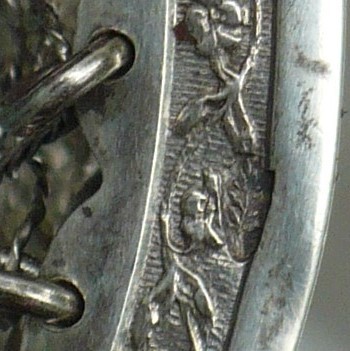
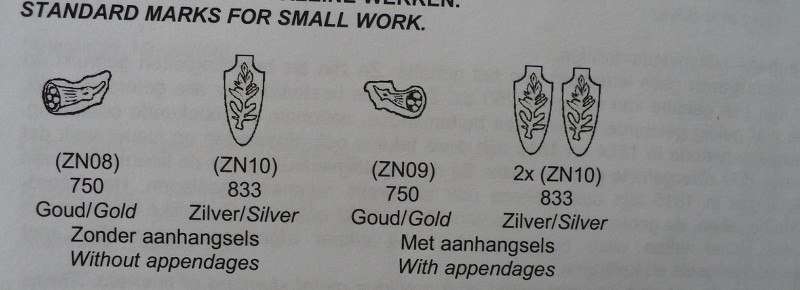

Script (flowery) letter T dot for; Johannes Tuijffers, registered in Maastricht 1799- before 1825
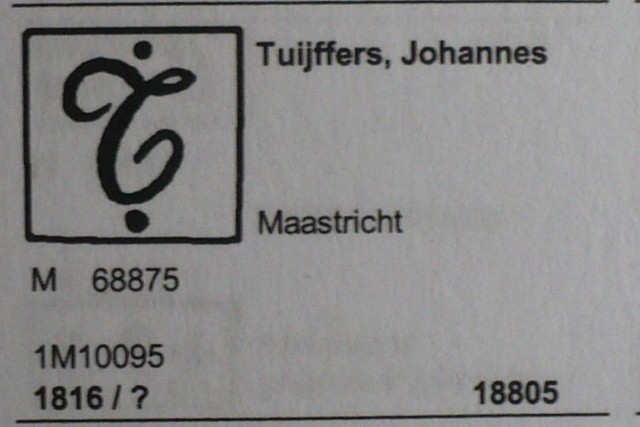
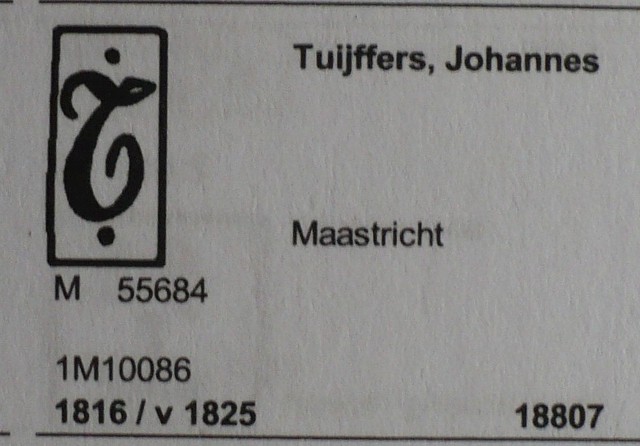
https://en.wikipedia.org/wiki/Southern_Netherlands
The Southern Netherlands, also called the Catholic Netherlands, was the part of the Low Countries largely controlled by Spain (1556–1714), later Austria (1714–1794), and occupied then annexed by France (1794–1815). The Southern Netherlands were part of the Holy Roman Empire until the whole area was annexed by Revolutionary France. The Southern Netherlands comprised most of modern-day Belgium and Luxembourg.
Maastricht was a key Roman castrum at the bridge where the main road from Cologne to Gaul crossed the River Maas (Meuse). Archaeological remnants of a 1700-year-old Roman urban square are still visible to guests taking breakfast at the central Derlon Hotel. Later in the 4th century, Armenian born St Servaas (Servatius) was buried in Maastricht leading it to develop into a major spiritual centre. Over future centuries the city's rise was frequently interrupted by wars and sieges.In 1830, when most of the southern Netherlands joined newly formed Belgium, Maastricht was 'saved' by commander Bernardus Dibbets who refused to accept a Belgian ultimatum and withstood a siege, leaving the city in Dutch hands as a disconnected exclave until 1839 when the Netherlands reclaimed enough of eastern Limburg to connect it to the rest of the Dutch state. This geographical appendix has lasted ever since, Maastricht hanging cartographically from the rest of the country, hemmed in on three sides by Belgium and Germany. In the 20th-century it was this very precarious position that saved the city from war damage: the Dutch government simply didn't bother mounting a defence.
https://en.wikipedia.org/wiki/Maastrich ... onal%20hub.
Peter.

